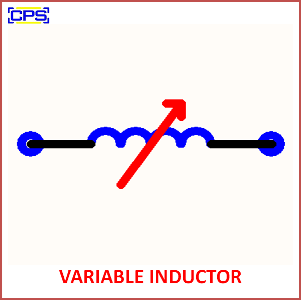A Variable Inductor is an inductor whose inductance value can be adjusted, typically by changing the physical dimensions of the inductor or altering the core material. It operates based on the principle of inductance, where the inductance LLL is proportional to the number of turns in the coil, the cross-sectional area of the coil, and the magnetic permeability of the core material. By adjusting these factors, the inductance can be varied to meet specific needs in electronic circuits.

Key Features of a Variable Inductor:
- Adjustable Inductance:
- The inductance value can be varied by changing the number of coil turns, the core position, or the type of core material.
- Mechanical or Electronic Adjustment:
- Mechanical Adjustment: Often achieved by moving a movable core (such as a ferrite core) inside the coil to change the inductance.
- Electronic Adjustment: Some designs allow electronic control of the inductance via a voltage or digital signal.
- Core Material:
- Commonly uses ferromagnetic materials like ferrite or iron as a core, which greatly increases the inductance compared to air-cored inductors.
- Application-Specific:
- Variable inductors are designed to meet the needs of specific applications that require tuning or precise control of inductance.
Working Principle:
- Inductance LLL of an inductor is given by the formula: L=N2μAlL = \frac{N^2 \mu A}{l}L=lN2μA Where:
- NNN is the number of turns in the coil.
- μ\muμ is the permeability of the core material.
- AAA is the cross-sectional area of the core.
- lll is the length of the coil.
By adjusting the number of turns, the position of the core, or changing the core material, the inductance can be varied.
Applications of Variable Inductors:
- Tuning Circuits:
- Commonly used in radio-frequency (RF) circuits for frequency tuning, such as in radio receivers or transmitters.
- Filters:
- Employed in adjustable filters where the inductance needs to be varied to select different frequency bands.
- Oscillators:
- Used in oscillators to adjust the resonant frequency of the circuit.
- Inductive Loads:
- In power electronics, used to adjust the inductance in circuits where inductive reactance needs to be tuned, such as in inductive heating or transformers.
- Impedance Matching:
- Variable inductors are used in impedance matching applications, such as in antennas or transmission lines, to optimize power transfer.
Advantages:
- Precise Control: Offers the ability to finely adjust inductance for specific applications.
- Frequency Tuning: Essential for tuning circuits, particularly in RF systems.
- Flexibility in Design: Can be adjusted dynamically to adapt to changing circuit requirements.
Disadvantages:
- Mechanical Wear: If the adjustment mechanism is mechanical (e.g., movable core), it may wear out with use.
- Size and Bulk: Some variable inductors can be relatively large or bulky, especially those used for higher inductance values.
- Temperature Sensitivity: The performance may be influenced by temperature, especially in high-frequency applications.
